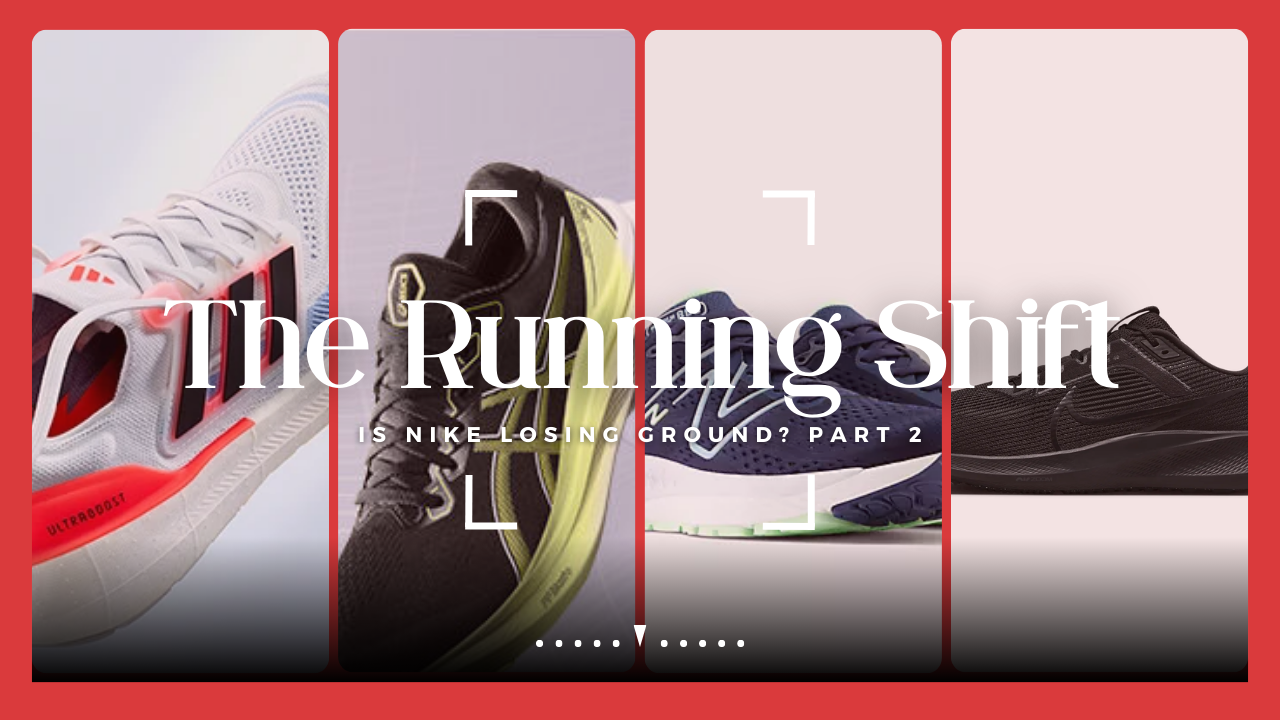![]()
- 0:00 Intro
- 0:30 Explaining Part 2
- 4:15 The Kicks and The Chart
- 6:00 New Balance Changes the Narrative
- 8:57 Expectations on NB and adi
- 9:43 Revisiting On’s Growth
- 13:10 Year over Year Data
- 16:16 New Balance and adi have issues
- 19:00 Maintaining Margins
- 20:24 Wrap-Up
In Part 1 of this series, I stated an important point on the data:
The charts use third-party sales data with keywords: Brand+Style+Men. There is an overlap in the product as sold listings will often carry other attributes. The keywords are broad which caters to Nike since they produce over six different versions of their Pegasus running shoes. The same goes for the other brands as different iterations of the styles exist and I didn’t account for those adjustments.
The upcoming chart is going to look way out of wack and will undoubtedly raise eyebrows. Where Nike completely dominated part 1 using the keywords Nike Pegasus, adidas and New Balance add a completely different layer to the discussion. The question now is whether keywords FreshFoam and UltraBoost are equivalent to Nike Pegasus? Should I shift from Pegasus to Invincible Run or Infinity Run or ZoomX? Am I looking to protect Nike if I do so? If I isolate UltraBoost and Fresh Foam to a particular style, the numbers shift dramatically. The following third party-data really delivers hot topics, but don’t let the chart fool you.
The Kicks:
- ASICS Gel Kayano
- Nike Pegasus
- New Balance Fresh Foam
- adidas UltraBoost
The Chart

New Balance Fresh Foam Changes the Narrative
Several comments on LinkedIn made it clear if New Balance were included it would be a more disruptive force than either On or HOKA. Looking solely at the chart, that appears to be an understatement. New Balance+Fresh Foam showed 100% growth year over year. adidas+UltraBoost is still appears to be the king, but not really. It’s hard not to notice New Balance’s performance. Like On Running seems to pull away from HOKA’s consumer base, New Balance appears to pull away from every brand, but again… not really.
Expectations need to be tempered. In Part 1, On Running and HOKA were the most isolated styles. HOKA doesn’t have a way to be measured broadly. On does. Adding the ‘5’ to On made their growth more specific. Using the broader keywords On Running+Cloud delivers 27,030 pair sold in 2023. This is where it gets interesting. I made a statement that expanded distribution would be problematic for On. In 2022, 36,774 pairs sold at an average price of $91.92. In 2023, On Running+Cloud 2023 has an average price of $89.33. Cloud models had a -25% drop in third party sales and a decrease in average price sold. How can one list be so positive for On Running and then negative? Why is adidas not the king based on this chart? Here are the detailed breakdowns to add even more food for thought.
Year Over Year Insights 2022
ASICS Gel Kayano
Nike Pegasus
New Balance Fresh Foam
adidas UltraBoost
Year Over Year Insights 2023
ASICS Gel Kayano
Nike Pegasus
New Balance Fresh Foam
adidas UltraBoost
Expanded Distribution as a Harbinger
adidas is in trouble. The UltraBoost in every form has an SRP of 180+ dollars. To see a reduction in the average sold price means the product is on deep promo. New Balance is the worst performing brand by average sold price. The last few years, like Nike, New Balance focused on signing athletes and growing lifestyle. They possibly increased distribution of their running models to offset the rise of On and HOKA. While Fresh Foam tends to have more lower cost alternatives, an average sold price that dropped from 52 to 47 is sacrificing margins for growth. Is that sustainable? Is On heading in a similar direction without casual/lifestyle and other segments to lean upon? Looking at both Part 1 and Part 2, what are your thoughts?
Note: Brands if you’d like links to your products placed into this post in perpetuity contact me at cburns@arch-usa.com

